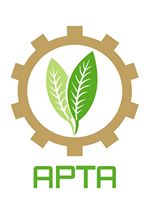Selection of Pseudomonas sp. for Lipid and Detergent Degradation
Nur Hidayat(1*), Luqman Nur Chandra(2)
(1) Department of Agroindustrial Technology, Faculty of Agricultural Technology, University of Brawijaya, Indonesia
(2) Primagama Samarinda, Indonesia
(*) Corresponding Author
Abstract
Keywords
Full Text:
PDFReferences
Arpigny, J.E. K. Jaeger.1999. Bacterial lipolytic enzymes: Classification and Properties. Biochem. J. 343: 177–183
Bendikienė, V., B. Surinėnaitė., B. Juodka. 2007.Pseudomonas mendocina 3121-1 lipase - catalysed lipolysis. The effect of detergents. BIOLOGIJA. 2007.53(4): 19–23
Chartrain,M., L. Katz., C. Marcin., M. Thien, S. Smith., E. Fisher., K. Goklen., P. Salmon., T. Brix., K. Prices R. Greasham. 1993. Purification and characterization of a novel bioconverting lipase from Pseudomonas aeruginosa MB 5001. Enzyme Microb. Technol.15: 575 – 580
Flawn, P.C., S. A. Malcolm R. C. S. Woodroffe. 1973. Assessment of the preservative capacity of shampoos. J. Soc. Cosmet. C hem. 24: 229– 238.
Folke, J L. Landner, 1999. The Principle Precautionary Action and its Application for Detergents.Tanggal akses 12 Desember 2009.(http://www.akira.ruc.dk/~mfg/PDF_files/LAS_&_Principle_of_PA.pdf)
Goodnow, R.A. A.P. Harrison, Jr. 1972. Bacterial Degradation of Detergent Compounds, Appl. Microbiol. 24(4): 555-560.
Helisto, P., T. Korpela. 1998.Effects of detergents on activity of microbial lipases as measured by the nitrophenylalkanoate esters method. Enzyme and Microbial Technology 23:113–117.
Khoddami, A., A..A. Ariffin., J. Bakar., H.M. Gazali. 2009. Fatty Acid Profile of the Oil Extracted from Fish waste (Head, Intestine, and Liver) (Sardinellalemuru). World. Appl. Sci. J. 7(1): 127 – 131.
Ojo, O.A ., B.A. Oso. 2008. Isolation and Characterization of Synthetic Detergent - degraders from Wastewater. Afr. J.Biotechnol. 7: 3753–3760.
Perales, J.A., M.A. Manzano, D. Sales, and J.A. Quiroga. 1999. Biodegradation kinetics of LAS in river water. International Biodeterioration & Biodegradation 43: 155–160.
Petrovic, M. A.R. Fernandez - Alba. 2002. Occurrence and Distribution of Nonionic Surfactants, their Degradation Products, and Linear Alkylbenzene Sulfonates in Coastal Waters and Sediments in Spain. Environmental Toxicology and Chemistry. 21(1): 37-46.
Shabtai, Y. 1991. Isolation and Characterization of a Lipolytic Bacterium Capable of Growing In a Low - water - Content Oil- Water Emulsion. Appl. Environ. Microbiol. 57(6): 1740-17
Article Metrics
Refbacks
- There are currently no refbacks.
Copyright (c) 2017 Nur Hidayat, Luqman Nur Chandra

This work is licensed under a Creative Commons Attribution-ShareAlike 4.0 International License.









